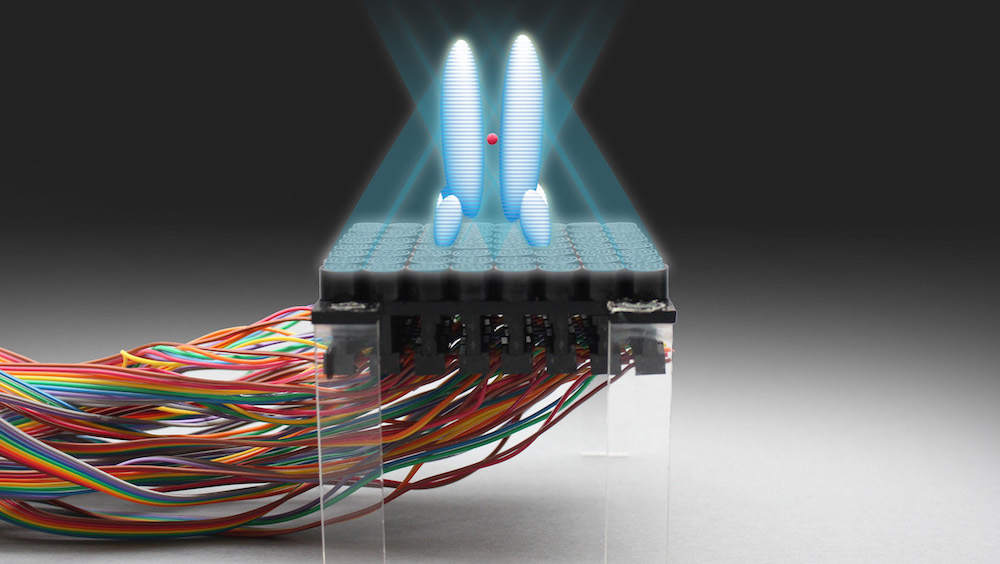Scientists have created a working Star Trek-like tractor beam
Science fiction comes to life

A team of scientists from the Universities of Sussex and Bristol in the UK have created a Star Trek-like tractor beam that uses sound waves to move objects.
Published today in Nature Communications, the scientists say the tech can be used for varying areas, including the ability "transport drug capsules or microsurgical instruments through living tissue."
Bruce Drinkwater, co-author of the paper and the professor of ultrasonics at the University of Bristol explained that while other researchers had used similar methods of using sound waves to levitate objects, it required speakers to be placed around the object to be levitated like a sandwich, limiting the movement.
Instead, the team from the two universities have managed to move objects, like beads, using just a single-sided array of 64 miniature loudspeakers to create high-pitch and high-intensity sound waves.
These speakers surrounds the object with high-intensity sound, creating "a force field that keeps the objects in place."
Force fields
The scientists can carefully control the output of the speakers to keep the object in place or to rotate it and move it.
"In our device we manipulate objects in mid-air and seemingly defy gravity," Drinkwater said.
Get daily insight, inspiration and deals in your inbox
Sign up for breaking news, reviews, opinion, top tech deals, and more.
"Here we individually control dozens of loudspeakers to tell us an optimal solution to generate an acoustic hologram that can manipulate multiple objects in real-time without contact."
The team created three different types of "acoustic force fields" to work as a tractor beam for different applications, including a force field that works like a tweezer, a vortex and "a high-intensity cage that surrounds the objects and holds them in place from all directions."
"We all know that sound waves can have a physical effect, but here we have managed to control the sound to a degree never previously achieved," Drinkwater explained.
Image credit: Asier Marzo, Bruce Drinkwater, Sriram Subramanian/University of Bristol